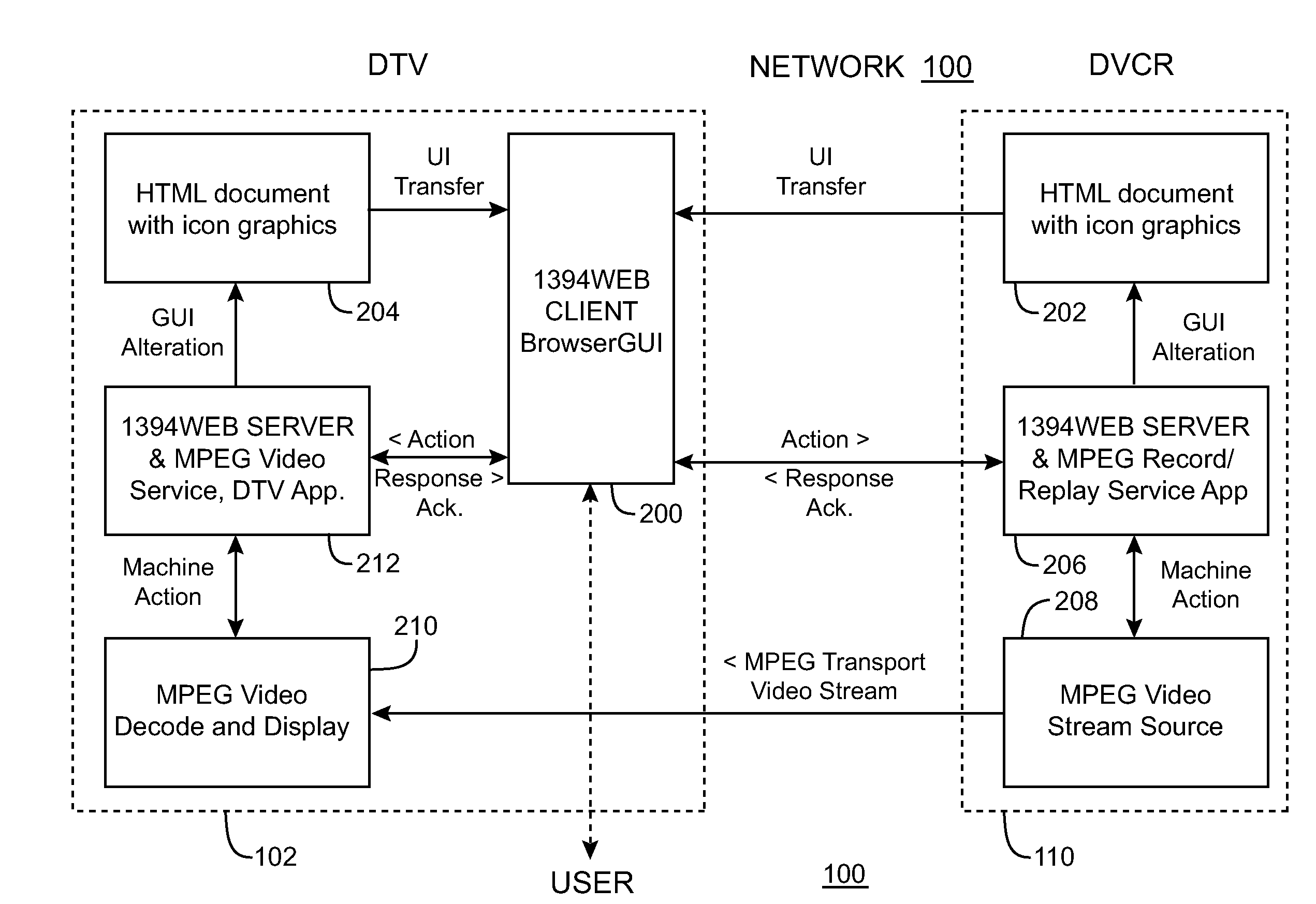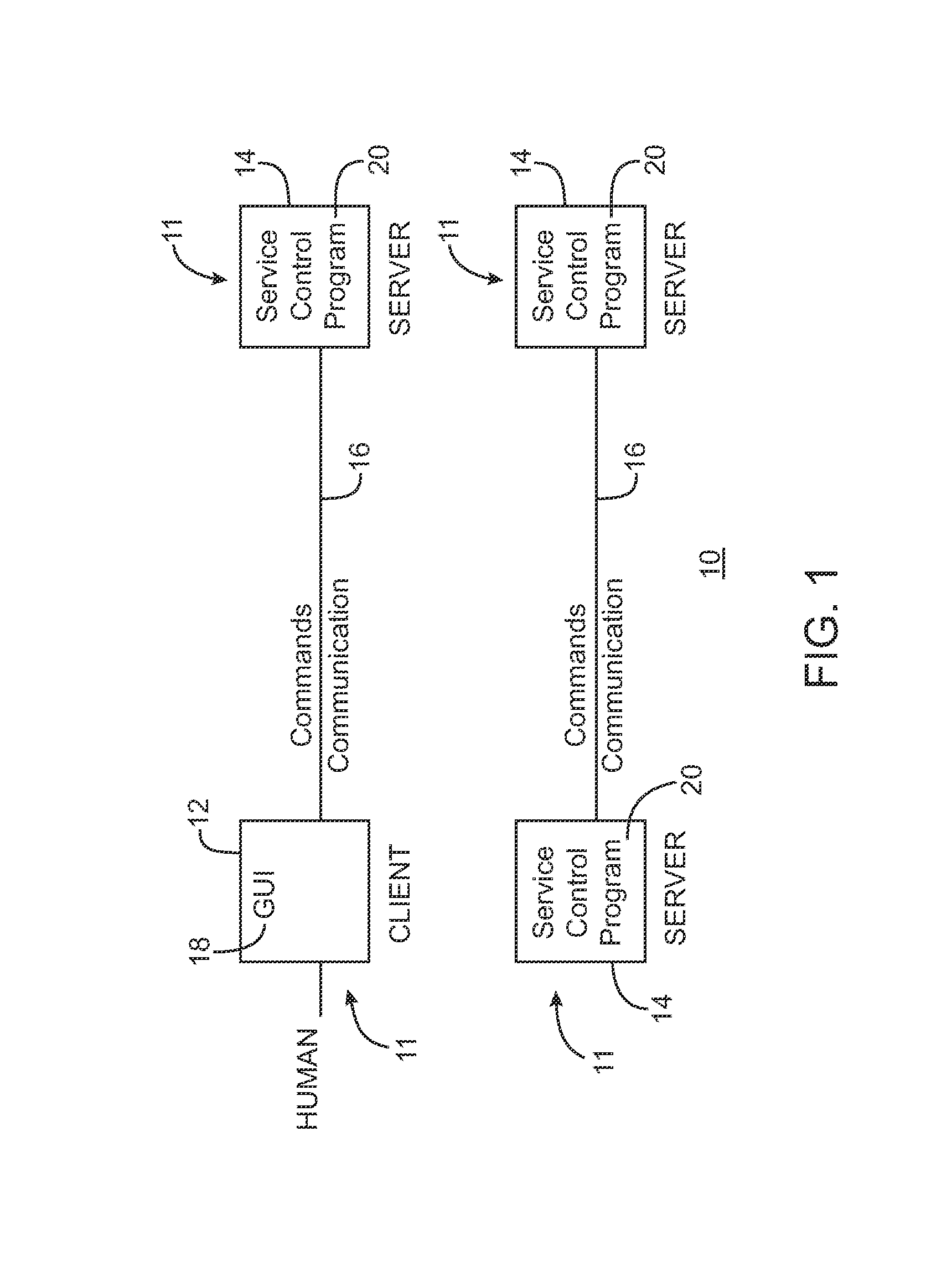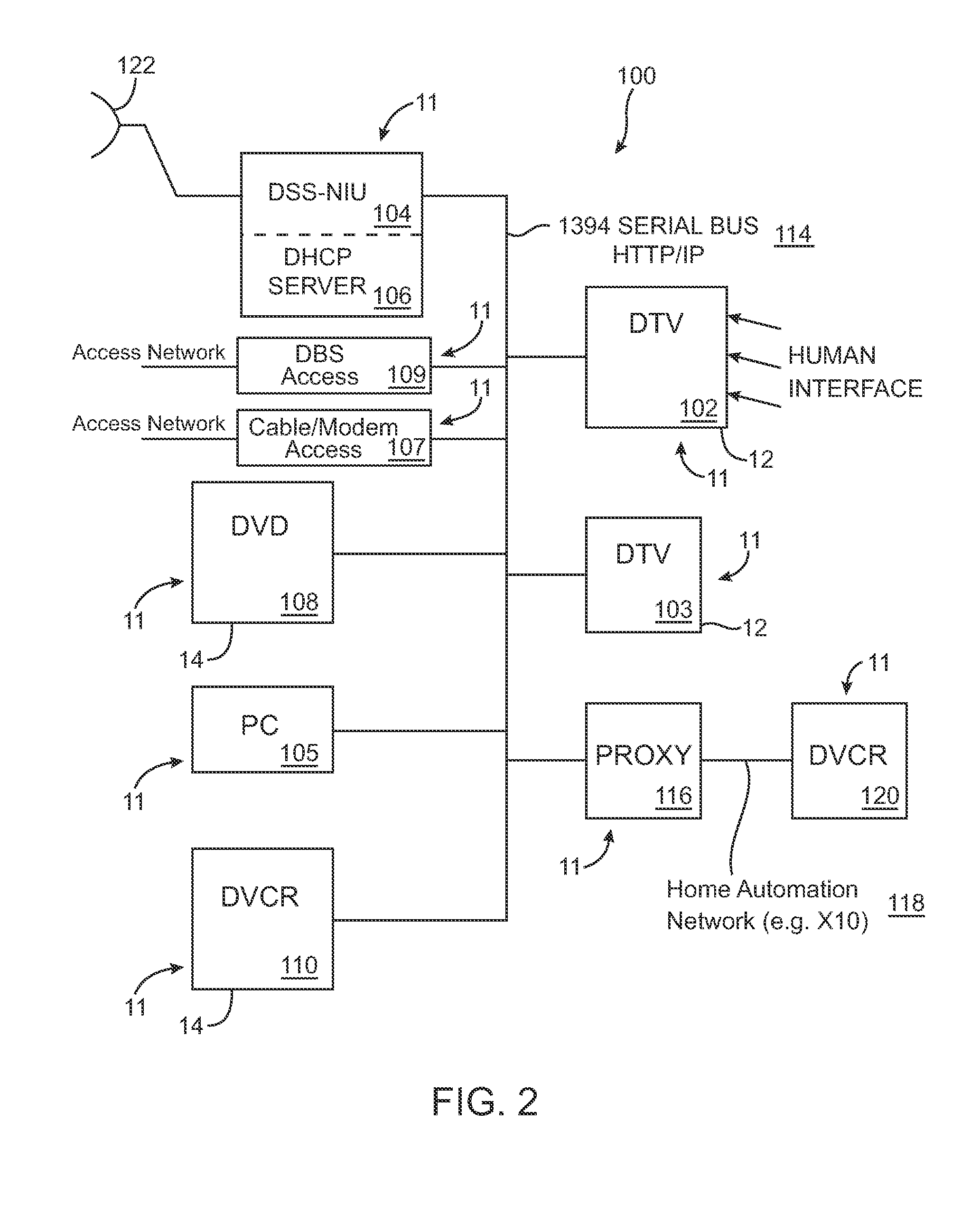Device customized home network top-level information architecture
a technology of information architecture and home network, applied in the field of devices and home networks, can solve the problems of providing static and command logic for controlling, remote control units cannot be used to command and control cd units, and remote control units cannot control and command only those home devices, etc., and achieve the effect of more reliabl
- Summary
- Abstract
- Description
- Claims
- Application Information
AI Technical Summary
Benefits of technology
Problems solved by technology
Method used
Image
Examples
Embodiment Construction
Network Overview
[0028]Referring to FIG. 1, in an embodiment of the present invention, a network 10 comprises multiple devices 11 including at least one client device 12 and at least one server device 14 interconnected via a communication link 16. The communication link 16 can include a 1394 serial bus providing a physical layer (medium) for sending and receiving data between the various connected home devices. The 1394 serial bus supports both time-multiplexed audio / video (NV) streams and standard IP (Internet Protocol) communications (e.g., IETF RFC 2734). In certain embodiments, a home network uses an IP network layer as the communication layer for the home network. However, other communication protocols could be used to provide communication for the home network. For example, the invention may be implemented using Function Control Protocol (FCP) as defined by IEC 61883, or any other appropriate protocol. Thus, a network may generally include two or more devices interconnected by ...
PUM
 Login to View More
Login to View More Abstract
Description
Claims
Application Information
 Login to View More
Login to View More - R&D
- Intellectual Property
- Life Sciences
- Materials
- Tech Scout
- Unparalleled Data Quality
- Higher Quality Content
- 60% Fewer Hallucinations
Browse by: Latest US Patents, China's latest patents, Technical Efficacy Thesaurus, Application Domain, Technology Topic, Popular Technical Reports.
© 2025 PatSnap. All rights reserved.Legal|Privacy policy|Modern Slavery Act Transparency Statement|Sitemap|About US| Contact US: help@patsnap.com



